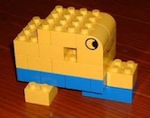rustytoolss wrote:Question... Is the "Compressive PSI" information for strength across the surface ? OR information about strength on the edges ?

The material is homogeneous, as far as I can tell, so that would be in pretty much any direction the force is applied/resisted. Somewhere deep in the OEM spec's it may say what the percentage of deflection is at that rating (for some reason 7/ct comes to mind, confirm first if it is critical for your design), but it is somewhat of a moot point using the TLAR method.
The real strength comes from the outer skins and the unity of the structure. So if you are planning interior cabinets, archways, and/or partitions those can do a lot to help stiffen everything up. Another factor is how much of a profile radius you will have in your main roof area. A flat roof will tend to sag much more easily than a pent or crowned roof.
Also, work sequence can be an issue. For example, I wanted to put my 5mm ply ceiling skin on top of my walls prior to fitting the roof foam and outer skin. Despite having cabinet face frames and bulkhead installed, and having a gentle radius to my roof profile, the ply couldn't support it's own weight and wanted to sag in the middle. Now if I had applied the foam first, had gone to the trouble to place temporary props, or had been using a lighter canvas inner skin applied to the foam in advance this may have gone differently. So I ended up adding a few more 1x2 cedar and poplar spars, in addition to the planned 2x2 cedar spars in the fan area, gluing these on top of the skin prior to installation in order to keep it from sagging. Once they were there it didn't make any sense to remove them, so I ended up with more wooden spars in my build and installed them in in a different sequence than I had planned. Now that the foam is filled in and the outer skin is on it is really solid. Granted mine is only 64 inches wide using 1-1/2 thk foam (2 layers of 3/4 inch).
Like we always say here in the Foamie forum; test. Everything you do from here is forward progress!



